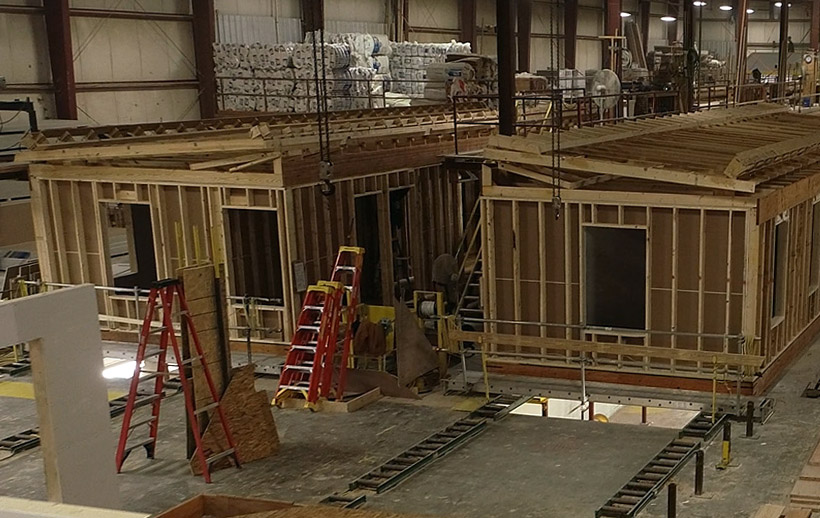“Go Green, Go Modular” means that choosing a modular home is a proven way to make environmentally conscious choices when building your new home. According to the U.S. Department of Energy, modular construction can reduce material waste by up to 50% and improve energy efficiency by 15-20% compared to traditional on-site construction methods. Additionally, modular homes can reduce carbon emissions by up to 40%, as they require fewer transportation and on-site labor resources.
Building a modular home is an excellent way to embrace sustainability. SMI’s modular homes are built in a controlled factory environment, leading to up to 30% faster construction times than traditional stick-built on-site homes. This controlled process significantly reduces waste—studies show that factory-built homes generate up to 90% less construction waste as compared to conventional methods. Moreover, because modular construction takes place indoors, the risk of weather delays is reduced by over 80%, further cutting down costs and improving efficiency.
Energy efficiency is another major advantage of a new modular home. Energy-efficient designs, such as solar panel integration and high-performance HVAC systems, can reduce utility costs by up to 50%. Homeowners can also choose energy-efficient materials that meet Energy Star or LEED certification standards, making their homes more sustainable and cost-effective in the long run.
Overall, modular homes offer multiple cost-saving and environmental benefits compared to traditional construction. Going Green with modular construction can include 30% faster build times, 50% less material waste, and 40% lower carbon emissions. Modular homes are an excellent option for those looking to go green. Go Green. Go Modular. Go SMI Homes!
About the Author
Cynthia has been in marketing for the past twenty years and is currently the Marketing Director at SMI Homes (5 years). In her free time, she loves designing and building websites.
She has a B.S. in Mechanical Engineering Technology from Purdue University and has worked in the automotive, corrugated, clothing, and construction industries. She has a US patent for her work on GM’s electric truck.








